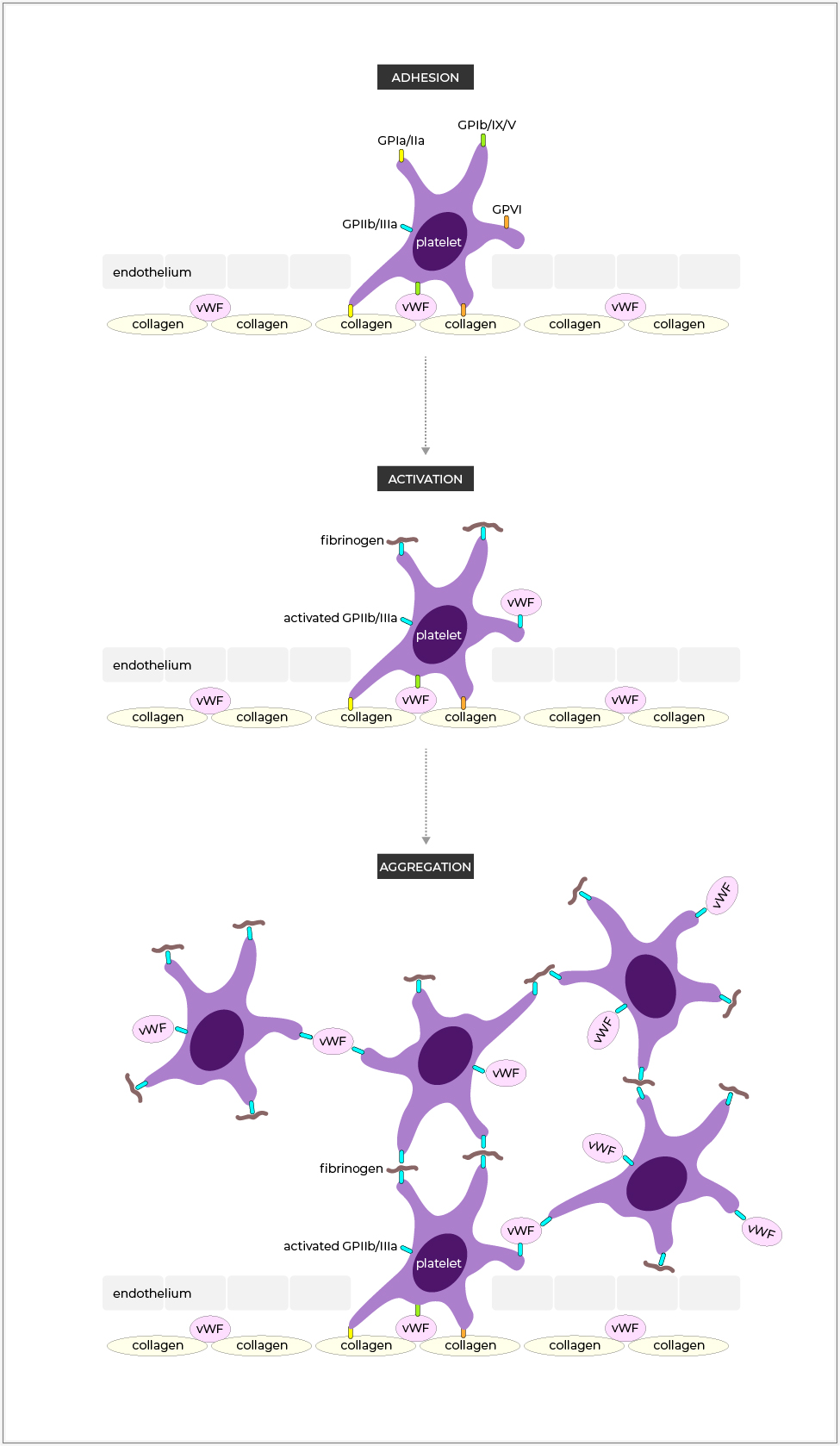• Platelets
thrombocytopenia
• Thrombocytopenia (low platelet count) results from 3 main mechanisms: decreased production, increased consumption/destruction, and abnormal distribution:
Decreased production: due to marrow dysfunction due to primary (e.g. Fanconi anemia) or acquired (e.g. marrow infiltration) causes or ineffective thrombopoeisis (e.g. nutritional deficiency)
Increased consumption or destruction: mediated by enhanced immune response (e.g. ITP, TTP), infection, drug, or shear stress
Abnormal distribution: due to splenic sequestration in hypersplenism or hemodilution
✿ Pseudothrombocytopenia
✧ artifact (edta)
✧ antibodies (IgG, IgM, IgA)
✧ glycoprotein iib/iiia inhibitors
✿ Decreased production
✧ Fanconi anemia
✧ acquired aplastic anemia
✧ myelodysplasia
✧ myelofibrosis
✧ neoplastic infiltration
☼ leukemia
☼ lymphoma
☼ metastatic cancer
✧ paroxysmal nocturnal hemoglobinuria
✧ hemophagocytic lymphohistiocytosis
✧ vitamin b12/ folate deficiency
✧ chronic alcohol abuse
✧ thyroid disorders
✧ infection
☼ parvovirus, hiv, hcv, ebv, cmv
☼ tuberculosis, brucellosis
✧ immunosuppressants
✿ Increased destruction
✧ immune thrombocytopenic purpura
✧ thrombotic thrombocytopenic purpura
✧ hemolytic uremic syndrome
✧ disseminated intravascular coagulopathy
✧ pregnancy (hellp)
✧ infection
☼ virus (hiv, hcv, ebv)
☼ protozoa (malaria, babesia)
☼ bacteria (h pylori)
✧ drugs
☼ heparin (hit)
☼ quinidine
☼ abciximab
✧ posttransfusion purpura
✧ shear stress
☼ hemodialysis
☼ cardiopulmonary bypass
☼ ecmo
✿ Abnormal distribution
✧ hypersplenism (splenomegaly)
✧ hemodilution
